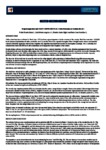Por favor, use este identificador para citar o enlazar este ítem:
http://www.alice.cnptia.embrapa.br/alice/handle/doc/16819Registro completo de metadatos
| Campo DC | Valor | Lengua/Idioma |
|---|---|---|
| dc.contributor.author | MARIN, F. R. | pt_BR |
| dc.contributor.author | ANGELOCCI, L. R. | pt_BR |
| dc.contributor.author | RIGHI, E. Z. | pt_BR |
| dc.contributor.author | SENTELHAS, P. C. | pt_BR |
| dc.date.accessioned | 2015-03-13T02:33:45Z | - |
| dc.date.available | 2015-03-13T02:33:45Z | - |
| dc.date.created | 2003-09-05 | pt_BR |
| dc.date.issued | 2004 | pt_BR |
| dc.identifier.citation | In: REUNION ARGENTINA Y LATINOAMERICANA DE AGROMETEOROLOGIA, 10., 2004, Mar del Plata: AADA, 2004. | pt_BR |
| dc.identifier.uri | http://www.alice.cnptia.embrapa.br/alice/handle/doc/16819 | pt_BR |
| dc.description | Coffee plants have been cultivated in Brazil since 1727 and have a great importance for the economy of the country. Brazil has more than 2,400,000 ha of commercial plantations of coffee, and in the last 15 years they have been expanded to regions where drought is more intense and normally coincides with fruit expansion, what became irrigation very important and somewhat essential in such regions (Camargo, 1985). Currently, it is estimated that about 200,000 ha of coffee plantations are being grown under irrigation in the country. In spite of great advances in technologies for water supply and the economic importance of coffee crop, irrigation management have been made inadequately in the most Brazilian coffee regions due to the large amount of water applied, which normally exceeds the crop needs (Camargo, 2002). Regarding this point, Carr (2001) postulated that estimates of water requirements for irrigation purposes are still imprecise for this crop and, probably, subject to large errors depending on the local circumstances and the system of irrigation used. The objective of this study was to assess the water use by a drip-irrigated coffee plantation in Southern Brazil using different measurement techniques in order to determine the two components of crop coefficients (Kc), i.e. basal (Kcb) and evaporative (Kce) components. The study also evaluated the micrometeorological factors affecting transpiration, crop and reference evapotranspiration relationships and its implications on actual rates of water use and on irrigation management. | pt_BR |
| dc.language.iso | por | pt_BR |
| dc.rights | openAccess | pt_BR |
| dc.subject | Coffee plants | pt_BR |
| dc.subject | Micrometeorological | pt_BR |
| dc.title | Evapotranspiration and CROP COEFFICIENTS of a Coffee Plantation in Southern Brazil. | pt_BR |
| dc.type | Artigo em anais e proceedings | pt_BR |
| dc.date.updated | 2015-03-13T02:33:45Z | pt_BR |
| riaa.ainfo.id | 16819 | pt_BR |
| riaa.ainfo.lastupdate | 2015-03-12 | pt_BR |
| dc.contributor.institution | FÁBIO RICARDO MARIN, CNPM; LUIZ ROBERTO ANGELOCCI; EVANDRO ZANINI RIGHI; PAULO CÉSAR SENTELHAS. | pt_BR |
| Aparece en las colecciones: | Artigo em anais de congresso (CNPM)  | |
Ficheros en este ítem:
| Fichero | Descripción | Tamaño | Formato | |
|---|---|---|---|---|
| 815.pdf | 125,53 kB | Adobe PDF |  Visualizar/Abrir |









